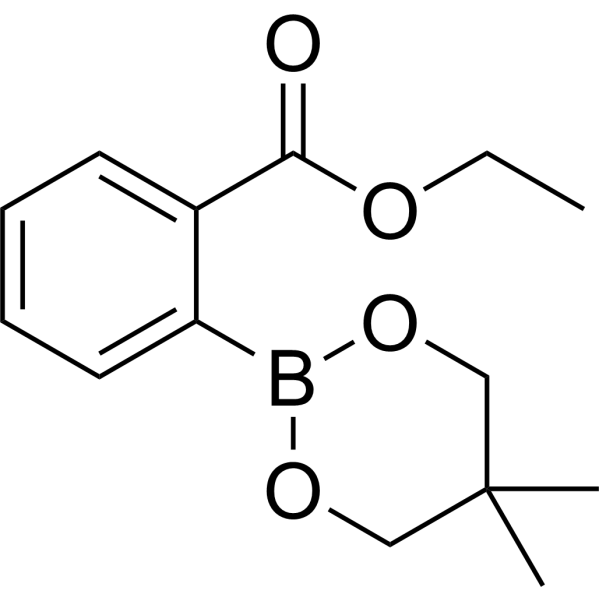
HSL-IN-3
CAS No. 346656-34-6
HSL-IN-3( Ethyl 2-(5,5-dimethyl-1,3,2-dioxaborinan-2-yl)benzoate | HSL inhibitor 3 )
Catalog No. M26251 CAS No. 346656-34-6
HSL-IN-3 is a boronic acid derivative that is an inhibitor of hormone-sensitive lipase(HSL).
Purity : >98% (HPLC)
 COA
COA
 Datasheet
Datasheet
 HNMR
HNMR
 HPLC
HPLC
 MSDS
MSDS
 Handing Instructions
Handing Instructions
| Size | Price / USD | Stock | Quantity |
| 5MG | 27 | In Stock |


|
| 10MG | 38 | In Stock |


|
| 50MG | 50 | In Stock |


|
| 100MG | 73 | In Stock |


|
| 200MG | Get Quote | In Stock |


|
| 500MG | Get Quote | In Stock |


|
| 1G | Get Quote | In Stock |


|
Biological Information
-
Product NameHSL-IN-3
-
NoteResearch use only, not for human use.
-
Brief DescriptionHSL-IN-3 is a boronic acid derivative that is an inhibitor of hormone-sensitive lipase(HSL).
-
DescriptionHSL-IN-3 is a boronic acid derivative that is an inhibitor of hormone-sensitive lipase(HSL).
-
In Vitro——
-
In Vivo——
-
SynonymsEthyl 2-(5,5-dimethyl-1,3,2-dioxaborinan-2-yl)benzoate | HSL inhibitor 3
-
PathwayOthers
-
TargetOther Targets
-
RecptorPEGs
-
Research Area——
-
Indication——
Chemical Information
-
CAS Number346656-34-6
-
Formula Weight262.11
-
Molecular FormulaC14H19BO4
-
Purity>98% (HPLC)
-
SolubilityIn Vitro:?DMSO : 100 mg/mL (381.52 mM)
-
SMILESCCOC(=O)c1ccccc1B1OCC(C)(C)CO1
-
Chemical Name——
Shipping & Storage Information
-
Storage(-20℃)
-
ShippingWith Ice Pack
-
Stability≥ 2 years
Reference
1.Snaebjornsson MT, et al. Non-canonical functions of enzymes facilitate cross-talk between cell metabolic and regulatory pathways. Exp Mol Med. 2018 Apr 16;50(4):34.
molnova catalog



related products
-
Lin28-let-7a antagon...
Lin28-let-7a antagonist 1, with an IC50 of 4.03 μM for Lin28A-let-7a-1 interaction,and shows a clear antagonistic effect against the Lin28-let-7a interaction.
-
Flaviviruses-IN-3
Flaviviruses-IN-3 (compound 87) is a potent inhibitor of flaviviruses, capable of reducing West Nile virus (WNV) protease activity by 54%.
-
Reptoside
Reptoside, which can be extracted from the roots and above-ground parts of Cortex Eucommiae and Ajuga chamaepitys (L.) Schreb, is one of the active cyclic enol ether terpene glycosides of Cortex Eucommiae for the treatment of osteoporosis.



 Cart
Cart
 sales@molnova.com
sales@molnova.com


